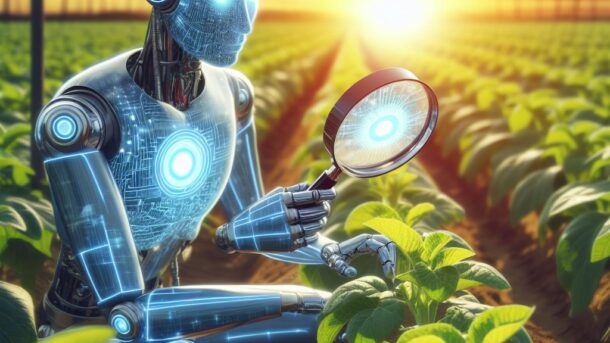Protecting crops from diseases and insect infestations has long been a difficult task in the complex field of agriculture. But the emergence of deep learning and artificial intelligence (AI) has sparked a new wave of creative solutions that have the potential to completely change how we tackle this age-old issue. With an emphasis on the soybean crop specifically, a recent study by scientists at IIIT Naya Raipur, India, examines the possibilities of AI-based solutions for crop disease identification, detection, and classification.
Legume plants like soybeans are extremely important to the world’s food chain because they provide edible oil and protein for animal feed. Soybean crops are vulnerable to a wide variety of insect attacks throughout their life cycle; reports suggest that up to 380 species may cause these crops worldwide. Early detection and identification of these insects are crucial to prevent further damage and ensure optimal crop yield and quality.
Crop health has traditionally been monitored and diseases and insect infestations have been identified primarily through manual inspection. However, in light of the difficulties facing modern agriculture, this method is labor-intensive, time-consuming, and prone to human error, making it ineffective and unsustainable. Here’s where AI-based solutions come into play, utilising state-of-the-art technology to improve and expedite the process.
The scientists at IIIT Naya Raipur created deep learning models—YOLOv5, InceptionV3, and Convolutional Neural Network (CNN)—to identify and find insects on soybean crop plants. A dataset of 3,150 photos of insects on soybean leaves, representing five distinct insect classes that are frequently found in the crop, was gathered and annotated as part of the study. Most importantly, the photos were taken in a variety of settings and with different mobile devices.
e researchers used a number of preprocessing techniques, such as segmenting images to reduce noise, data augmentation to expand the training dataset, and image resizing to expedite training and ensure uniformity, to guarantee the best results. The remarkable outcomes attained by the AI-based solutions were made possible by these diligent steps.
The YOLOv5 algorithm, a cutting-edge object detection model, successfully identified and classified insects with a remarkable 98.75% accuracy rate and a mean average precision (mAP) of 71.594% at 50–95% confidence levels. The impressive achievement is credited to the resilient architecture of deep learning models such as YOLOv5, which are engineered to reliably recognise objects in images, regardless of changing conditions.
The YOLOv5 model also showed impressive speed, with a remarkable 53 frames per second of operation, which makes it ideal for real-time detection applications. This real-time feature is extremely valuable because it allows farmers to keep a close eye on their crops and respond quickly if they see any indications of insect infestations.
With respective accuracy rates of 97%, the CNN and InceptionV3 models also demonstrated excellent performance, confirming the effectiveness of AI-based solutions in this field. These models’ success can be ascribed to the large and well-balanced dataset that was used for training, as well as to data enhancement and transfer learning tactics that improved the models’ capacity to generalise and adjust to a variety of situations.
The researchers created a TensorFlow application to show the real-time detection of insects on crop plants in order to further highlight the solution’s practical applicability. This real-world application highlights the possibility for the smooth incorporation of AI-based solutions into current farming methods, providing farmers with state-of-the-art tools to protect their crops and maximise yields.
The impact of this research goes beyond growing soybeans. The possibility of applying their solution to other crop plants—like cotton, wheat, and paddy—that are also vulnerable to different insect infestations is emphasised by the researchers. This AI-based method can lighten farmers’ workloads and give them accurate, timely information, allowing them to take preventative action and cut expenses by automating the process of identifying and detecting insects.
The study further emphasises how adaptable AI and deep learning methods are in solving real-world problems in a variety of industries. The integration of AI solutions in agriculture will become more and more important as technology continues to advance at an unprecedented rate. This is because meeting the growing demands of a rapidly expanding global population and ensuring sustainable food production are two key objectives.
In conclusion, the enormous potential of AI-based solutions for crop disease identification, detection, and classification has been highlighted by the ground-breaking research carried out by the IIIT Naya Raipur team. They provide a scalable, highly accurate, and efficient way to identify insect infestations in soybean crops by utilising the power of deep learning models such as CNN, InceptionV3, and YOLOv5.




